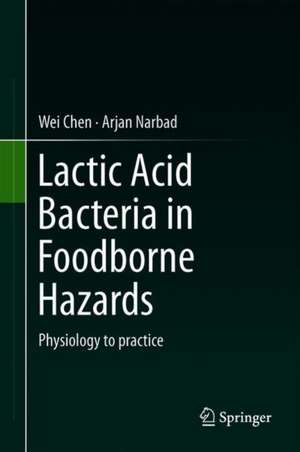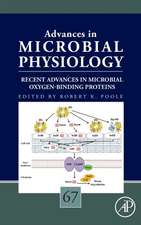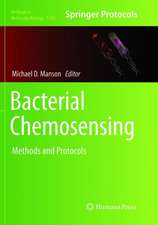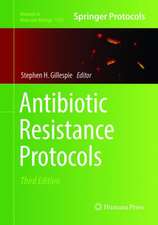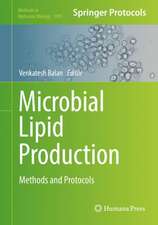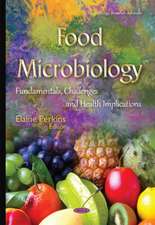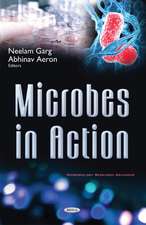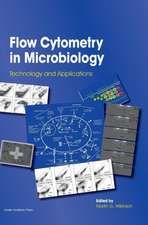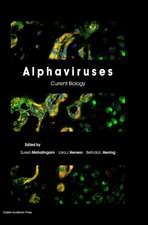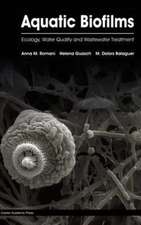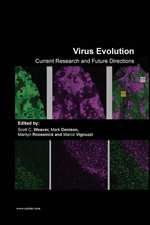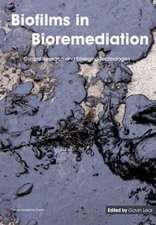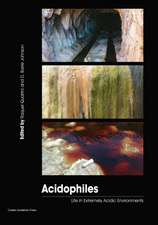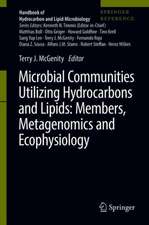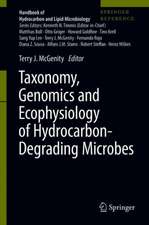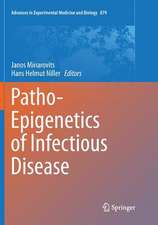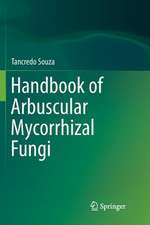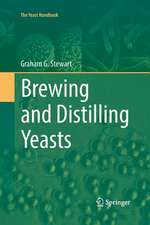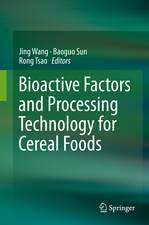Lactic Acid Bacteria in Foodborne Hazards Reduction: Physiology to Practice
Autor Wei Chen, Arjan Narbaden Limba Engleză Hardback – 5 dec 2018
It offers a valuable resource for researchers, graduate students, nutritionists and product developers in the fields of food science and microbiology.
Preț: 952.09 lei
Preț vechi: 1161.08 lei
-18% Nou
Puncte Express: 1428
Preț estimativ în valută:
182.24€ • 198.02$ • 153.18£
182.24€ • 198.02$ • 153.18£
Carte disponibilă
Livrare economică 31 martie-14 aprilie
Preluare comenzi: 021 569.72.76
Specificații
ISBN-13: 9789811315589
ISBN-10: 9811315582
Pagini: 270
Ilustrații: IX, 310 p. 42 illus., 15 illus. in color.
Dimensiuni: 155 x 235 mm
Greutate: 0.64 kg
Ediția:1st ed. 2018
Editura: Springer Nature Singapore
Colecția Springer
Locul publicării:Singapore, Singapore
ISBN-10: 9811315582
Pagini: 270
Ilustrații: IX, 310 p. 42 illus., 15 illus. in color.
Dimensiuni: 155 x 235 mm
Greutate: 0.64 kg
Ediția:1st ed. 2018
Editura: Springer Nature Singapore
Colecția Springer
Locul publicării:Singapore, Singapore
Cuprins
Chapter 1: Introduction.- Chapter 2: Genomic analysis of lactic acid bacteria and its application.- Chapter 3: Protein and exopolysaccharide of lactic acid bacteria.- Chapter 4: Metabolites of lactic acid bacteria.- Chapter 5: Environmental stress responses of lactic acid bacteria.- Chapter 6: Lactic acid bacteria-based food fermentations.- Chapter 7 Lactic acid bacteria and foodborne pathogens.- Chapter 8: Lactic acid bacteria and heavy metal pollution.- Chapter 9: Lactic acid bacteria and food-based allergy.- Chapter 10: Lactic acid bacteria and biotoxins.
Notă biografică
Dr. Wei Chen is a Professor at the School of Food Science and Technology, Jiangnan University, Wuxi, China.
Dr. Arjan Narbad is a Research Leader at Quadram Institute Bioscience, Norwich, UK.
Dr. Arjan Narbad is a Research Leader at Quadram Institute Bioscience, Norwich, UK.
Textul de pe ultima copertă
This book provides an overview of the physiological basis of lactic acid bacteria and their applications in minimizing foodborne risks, such as pathogens, heavy metal pollution, biotoxin contamination and food‐based allergies. While highlighting the mechanisms responsible for these biological effects, it also addresses the challenges and opportunities that lactic acid bacteria represent in food safety management.
It offers a valuable resource for researchers, graduate students, nutritionists and product developers in the fields of food science and microbiology.
Caracteristici
Introduces the basic molecular biology knowledge of lactic acid bacteria and their metabolites Deals with various foodborne toxins Covers applications in minimizing foodborne risks
